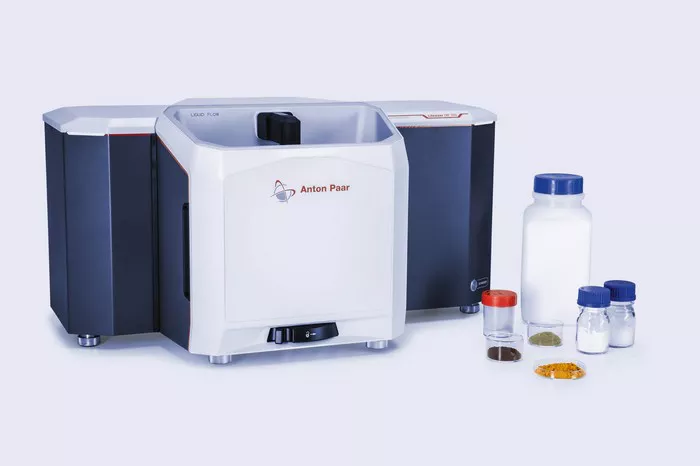Moisture analyzers are essential instruments used across various industries, including food processing, pharmaceuticals, agriculture, and materials manufacturing. They determine the moisture content in a sample, which is crucial for ensuring product quality, consistency, and compliance with industry standards. Understanding how a moisture analyzer works can help businesses optimize production processes and maintain product integrity. This article explores the working principles, components, types, and applications of moisture analyzers in detail.
Principles of Moisture Analysis
A moisture analyzer operates on the basic principle of thermogravimetric analysis (TGA). This technique involves heating a sample to remove its moisture content while continuously measuring the weight. The weight loss corresponds to the amount of moisture in the sample, providing an accurate moisture percentage.
Thermogravimetric Analysis (TGA)
The TGA method involves the following steps:
Initial Weighing: The moisture analyzer weighs the sample before drying.
Heating Process: The instrument heats the sample using an integrated heating element, typically a halogen lamp, infrared heater, or microwave.
Evaporation of Moisture: As the temperature rises, moisture in the sample evaporates.
Continuous Weight Measurement: The built-in balance continuously measures weight loss as moisture evaporates.
Final Weighing and Calculation: Once drying is complete, the moisture analyzer calculates the moisture percentage based on weight loss.
Components of a Moisture Analyzer
A typical moisture analyzer consists of several key components that work together to provide precise moisture measurements:
Weighing System
- A high-precision balance ensures accurate weight measurements before and after drying.
- Advanced models feature analytical balances with milligram-level precision.
Heating System
- The heating element, such as a halogen lamp or infrared heater, supplies consistent heat to the sample.
- Different heating technologies offer varying drying speeds and uniformity.
Control and Display Unit
- A user interface allows operators to set parameters such as drying temperature and time.
- The display provides real-time data on weight changes and moisture content.
Sample Chamber
- The chamber holds the sample, ensuring uniform heat distribution.
- It is designed to accommodate small amounts of material for fast and precise results.
Cooling and Ventilation System
- Prevents overheating and ensures consistent moisture analysis.
- Improves instrument longevity and operational stability.
Types of Moisture Analyzers
Several types of moisture analyzers exist, each suited to specific applications and sample types:
1. Halogen Moisture Analyzers
- Utilize a halogen lamp as the heat source.
- Provide fast and uniform heating.
- Commonly used in food, pharmaceutical, and chemical industries.
2. Infrared Moisture Analyzers
- Use infrared radiation for drying.
- Efficient for samples requiring gentle heating.
- Used in laboratories and quality control processes.
3. Microwave Moisture Analyzers
- Employ microwave energy to heat and evaporate moisture.
- Suitable for high-moisture-content samples.
- Widely used in agriculture and biomass industries.
4. Capacitive and Conductive Moisture Analyzers
- Measure moisture based on electrical properties.
- Non-destructive testing method.
- Used for materials like wood, paper, and textiles.
Applications of Moisture Analyzers
Moisture analyzers play a critical role in multiple industries, ensuring product quality, compliance, and efficiency:
1. Food Industry
- Determines moisture content in grains, dairy, meat, and baked goods.
- Helps maintain texture, taste, and shelf life.
- Ensures compliance with food safety regulations.
2. Pharmaceuticals
- Measures moisture in active pharmaceutical ingredients (APIs) and excipients.
- Ensures drug stability and effectiveness.
- Supports regulatory compliance (e.g., FDA, USP standards).
3. Agriculture and Farming
- Evaluates moisture in soil, seeds, and crops.
- Essential for optimizing storage conditions and preventing spoilage.
4. Chemicals and Plastics
- Controls moisture in raw materials like polymers and resins.
- Ensures the integrity of chemical compositions and final products.
5. Paper and Textile Industry
- Determines moisture levels in paper, cardboard, and fabric.
- Prevents defects and ensures production consistency.
Factors Affecting Moisture Analysis Accuracy
To obtain reliable moisture measurements, several factors must be controlled:
Sample Size and Preparation
- Proper sample size improves accuracy.
- Uniform spreading ensures even drying.
Heating Temperature and Time
- Too high a temperature may cause decomposition.
- Too low a temperature may result in incomplete drying.
Environmental Conditions
- Humidity and temperature variations can influence results.
- Using a moisture analyzer in a controlled environment improves precision.
Instrument Calibration and Maintenance
- Regular calibration ensures consistent accuracy.
- Cleaning the sample tray prevents contamination.
Advantages of Using Moisture Analyzers
Fast and Accurate Results: Moisture analyzers provide rapid and precise moisture content measurements.
Non-Destructive Testing: Some models offer non-invasive methods for delicate materials.
Automated Operation: User-friendly interfaces simplify the testing process.
Regulatory Compliance: Ensures compliance with industry standards and regulations.
Conclusion
Moisture analyzers are vital instruments for industries requiring precise moisture measurements. By utilizing thermogravimetric principles, these devices help optimize production processes, maintain product quality, and meet regulatory requirements. Understanding the working principles, types, and applications of moisture analyzers allows businesses to select the right instrument for their needs, ensuring efficiency and accuracy in moisture analysis.


